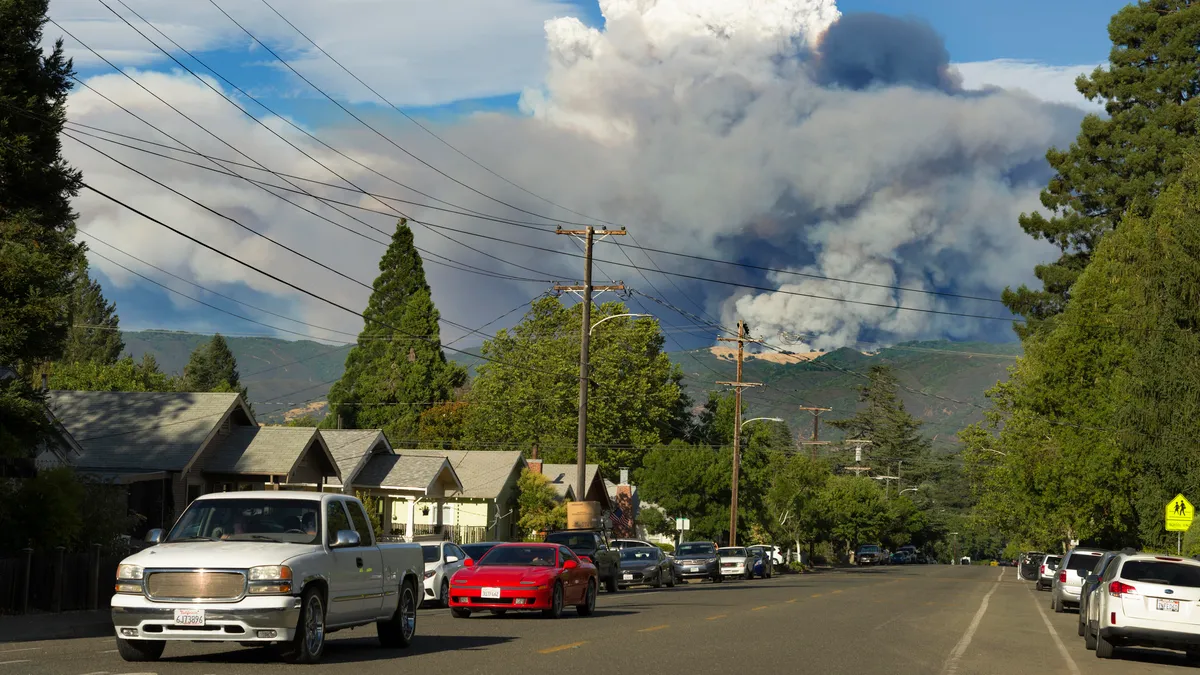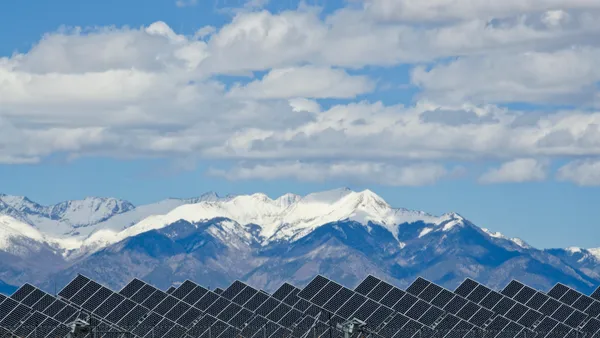Dive Brief:
- Pacific Gas & Electric knew for years there was a risk its aging transmission system could spark wildfires but did little to address the issue, according to a Wednesday report by The Wall Street Journal based on documents obtained through public records requests.
- The utility is facing billions in claims for wildfires in recent years, and experts say this latest development could give additional ammunition to customers with damage claims. PG&E filed for bankruptcy earlier this year related to wildfire liabilities and is currently inspecting its system in high fire-threat areas.
- Also on Wednesday, legislation to develop a liquidity fund to assist utilities in paying wildfire costs was approved by the California Assembly's Utilities and Energy Committee. A full vote could happen today.
Dive Insight:
PG&E officials say they are focused on safety and acknowledge the damage done by wildfires in recent years, but the troubled utility still takes issue with the Journal's report.
"We don't agree with or support the Journal's conclusions," officials said in a statement to Utility Dive.
But at the same time, the company said it has "acknowledged that the devastation of the 2017 and 2018 wildfires made clear that we must do more to combat the threat of wildfires and extreme weather while hardening our systems."
On Wednesday, a federal judge ordered the company to file a public statement with the court by July 31 to "respond to the [Wall Stree Journal] report on a paragraph-by-paragraph basis stating the extent to which each paragraph is true."
Judge William Alsup, of the U.S. District Court for the Northern District of California, also ordered the utility to disclose the recipients and full amount of recent political campaign contributions and explain why it made $5 billion in dividend payments soon before it filed for bankruptcy, Bloomberg News reported. Alsup is overseeing PG&E probation stemming from its 2016 conviction related to a gas line explosion in San Bruno, Calif. that killed eight people.
The utility has thousands of transmission towers and is uncertain of all their ages, but according to Wednesday's report, internal documents from two years ago estimated average tower age to be 68 years — with some as old as 108. The mean life expectancy of the towers is 65 years, according to the Journal.
PG&E said last month that through the end of May, it had completed visual inspections of approximately 99% of its distribution infrastructure and visual or aerial inspections of approximately 98% of its transmission infrastructure in high-fire threat areas, including roughly 50,000 transmission structures.
All California utilities are struggling to deal with wildfires, and the state has moved swiftly to approve mitigation plans. And yesterday an Assembly committee advanced AB 1054, legislation intended to create a $21 billion fund to help utilities cover wildfire damage liabilities.
A full vote from the Assembly could happen today. The Senate approved the rapidly-advancing measure on Monday.
The law would direct utility ratepayers to contribute $10.5 billion, with shareholders contributing the same amount. Customers would pay into the fund through a $2.50 monthly charge.
PG&E's Official Creditors Committee responded to the Journal report by saying "public safety is paramount," and that it wants to ensure that the new, restructured utility "has the leadership and resources to implement the changes in culture and practices necessary that will improve performance and mitigate risk successfully so that future tragedies are prevented."
The committee has been supportive of AB 1054, and told Utility Dive that a successful resolution of the PG&E bankruptcy case must create a "restructured company with operational and financial stability, including sufficient access to capital."
Are California lawmakers moving too quickly on AB 1054?
There are significant questions surrounding the bill. The Los Angeles Times editorial board yesterday called it "badly vetted."
Attorneys for Aguirre & Severson, who are representing utility customers in a pending wildfire case, say it amounts to a bailout of utilities and will almost certainly lead to rate increases as California wildfires persist.
The bill eases the standard for utilities to recover wildfire claims and could cost customers $225 billion to $250 billion over the next 15 years, according to attorney Michael Aguirre.
"There is a co-dependent relationship between the legislature and utilities," he told Utility Dive, pointing to hefty campaign contributions to lawmakers. "Utilities are foundational to political campaign contributions in California," he said.
Lawmakers, however, have said they do not want utilities going bankrupt, and so must find a way to address the state's strict liability laws. California's "inverse condemnation" rules mean a utility can be found liable for damages regardless of negligence.
But while PG&E is working to repair its financial situation, some say The Wall Street Journal's revelations of PG&E's knowledge of its wildfire risk could create additional jeopardy for the utility.
"Any additional disclosures of PG&E's malfeasance provides more artillery for the Committee of Tort Claimants and those who have sued PG&E for damages in support of their claims to PG&E's assets," Howard Steel, a partner in law firm Goodwin's financial restructuring practice, told Utility Dive in an email.














